Tennessee Folklore Society
Annual Meetings -- An Online Sampler
The Tennessee Folklore Society was founded in
1934 to encourage research and documentation about Tennessee
folk culture. Since then it has continuously published the Tennessee
Folklore Society Bulletin and, except during World
War II, held annual meetings with lectures and screenings about
a wide range of Tennessee folklife topics, from traditional
music to folktales and verbal arts, practices and customs, and
material culture. Over the years, TFS meetings have provided an
important forum for members and guests and helped sustain a
statewide advocacy network for the field. This year, the
Covid-19 pandemic (like gas rationing during WWII) now
unfortunately prohibits the society from holding its
face-to-face annual meeting for 2020.
In its stead, the TFS is posting an online sample
of outstanding sessions from annual meetings in recent years,
made possible by the recording and editing of longtime TFS
member and videographer Martin Fisher. The videos demonstrate
the diverse interests embraced by the society members and its
mission, and we hope they will help increase awareness of the
TFS and invite new audiences to join in its future activities:
For a playlist of the below presentations click here
Additional presentations and performances were
published in 2021, described here.
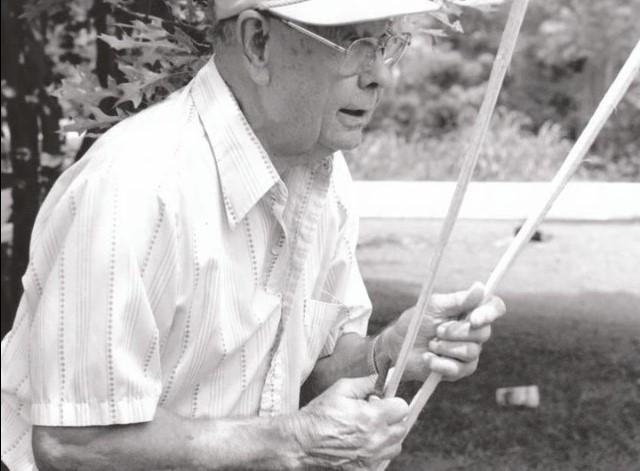 “Handmade:
White Oak Basketry in Cannon County, Tennessee”
(Evan Hatch and Jacob Smithson, 2011; 34 minutes). This
documentary video was produced as a component of an exhibit at
the Arts Center of Cannon County about the area’s basketry
tradition, which is among America’s most significant local folk
craft legacies. Topics covered include history of the tradition
and some of its masters, harvesting and processing of white oak
materials, techniques and aesthetics of the craft, outstanding
baskets from the ACCC collection, and a white oak co-op project
making materials available to surviving makers. The Society also
published extensive documentation of Cannon County basketry in
the 2010 and 2012 volumes of the Tennessee Folklore Society
Bulletin.
“Handmade:
White Oak Basketry in Cannon County, Tennessee”
(Evan Hatch and Jacob Smithson, 2011; 34 minutes). This
documentary video was produced as a component of an exhibit at
the Arts Center of Cannon County about the area’s basketry
tradition, which is among America’s most significant local folk
craft legacies. Topics covered include history of the tradition
and some of its masters, harvesting and processing of white oak
materials, techniques and aesthetics of the craft, outstanding
baskets from the ACCC collection, and a white oak co-op project
making materials available to surviving makers. The Society also
published extensive documentation of Cannon County basketry in
the 2010 and 2012 volumes of the Tennessee Folklore Society
Bulletin.
 “Vernacular Design
Methods of Tennessee Delta Quilts” (Teri
Klassen, 2015; 30 minutes). Klassen discusses improvisation among
quilters of both African and Scotch Irish descent in the
Brownsville area, historically an intersection of plantation and
yeoman-sharecropper cultures. Working with 32 consultants, she
documented local quilt history and surviving quilts, from fancy
“bedspread” quilts of the wealthy to those made for use in
households of more modest means. Improvisation is especially
evident in these quilts made for use, which often incorporated
traditional design formulas such as the African-American “variable
shell.” Klassen is the author of Tennessee Delta Quiltmaking.
“Vernacular Design
Methods of Tennessee Delta Quilts” (Teri
Klassen, 2015; 30 minutes). Klassen discusses improvisation among
quilters of both African and Scotch Irish descent in the
Brownsville area, historically an intersection of plantation and
yeoman-sharecropper cultures. Working with 32 consultants, she
documented local quilt history and surviving quilts, from fancy
“bedspread” quilts of the wealthy to those made for use in
households of more modest means. Improvisation is especially
evident in these quilts made for use, which often incorporated
traditional design formulas such as the African-American “variable
shell.” Klassen is the author of Tennessee Delta Quiltmaking.
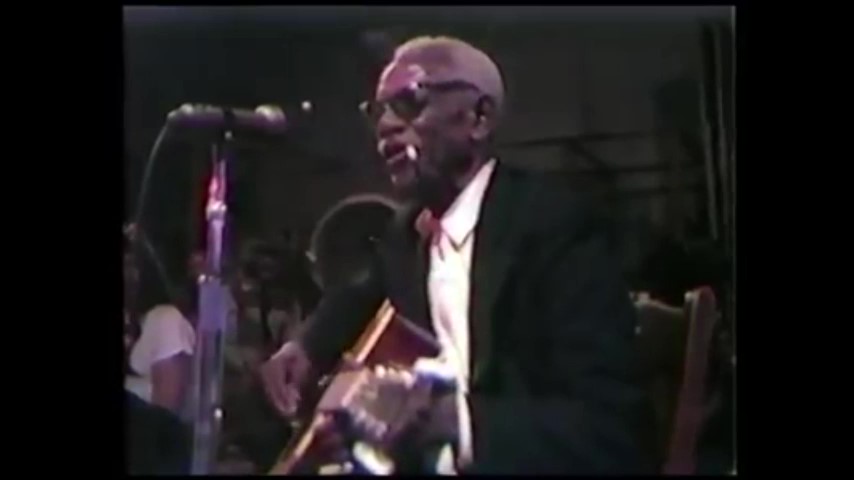 “Furry Lewis: Man and
Mythos” (J. Tyler Fritts, 2015; 23
minutes). Furry Lewis was perhaps Memphis’ most celebrated
country bluesman. As a boy he had by 1910 moved to the city from
Greenwood, Mississippi, then performed over the years with
traveling shows and in the Beale Street district. He was
eventually recorded by Samuel Charters in 1959 before gaining
notoriety among folk revival audiences in the 1960s and 1970s.
Fritts calls attention to a series of points in Lewis’ biography
about which there are discrepancies in various accounts and
sources. He reviews questions about the actual year of Lewis’
birth, the origin of his nickname “Furry,” claims to his musical
abilities and innovations, and his links to other musical
celebrities-- all evidencing a process of embellishment and
mythologizing that surrounded Lewis as a musical figure.
“Furry Lewis: Man and
Mythos” (J. Tyler Fritts, 2015; 23
minutes). Furry Lewis was perhaps Memphis’ most celebrated
country bluesman. As a boy he had by 1910 moved to the city from
Greenwood, Mississippi, then performed over the years with
traveling shows and in the Beale Street district. He was
eventually recorded by Samuel Charters in 1959 before gaining
notoriety among folk revival audiences in the 1960s and 1970s.
Fritts calls attention to a series of points in Lewis’ biography
about which there are discrepancies in various accounts and
sources. He reviews questions about the actual year of Lewis’
birth, the origin of his nickname “Furry,” claims to his musical
abilities and innovations, and his links to other musical
celebrities-- all evidencing a process of embellishment and
mythologizing that surrounded Lewis as a musical figure.
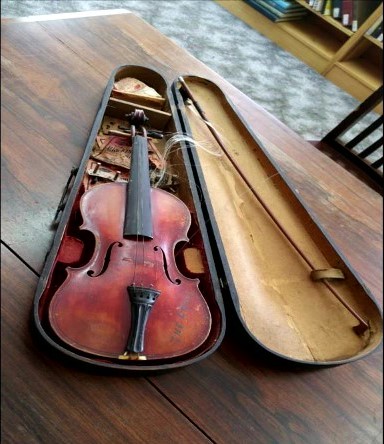 “Some Real American
Music: the Gribble, Lusk, and York Black String Band of
Warren County” (Linda Henry, 2018; 21
minutes). Gribble, Lusk, and York
comprised an exemplary African-American string band near
McMinnville that was recorded by Library of Congress fieldworkers
in the 1940s. Henry’s work with descendants of these musicians
adds to their documentation. Murphy Gribble, John Lusk, and Albert
York were grandsons of a slave fiddler, Jefferson Lusk, who was
sent to New Orleans in the 1840s to learn the instrument. They
were active as a group for some 30 years into the 1950s, playing
for community dances and on McMinnville streetcorners, and their
repertory included both tunes familiar to white audiences and
others from Jeff Lusk’s music. For additional information and
field recordings of the group, visit Henry’s website gribbleluskandyork.org
.
“Some Real American
Music: the Gribble, Lusk, and York Black String Band of
Warren County” (Linda Henry, 2018; 21
minutes). Gribble, Lusk, and York
comprised an exemplary African-American string band near
McMinnville that was recorded by Library of Congress fieldworkers
in the 1940s. Henry’s work with descendants of these musicians
adds to their documentation. Murphy Gribble, John Lusk, and Albert
York were grandsons of a slave fiddler, Jefferson Lusk, who was
sent to New Orleans in the 1840s to learn the instrument. They
were active as a group for some 30 years into the 1950s, playing
for community dances and on McMinnville streetcorners, and their
repertory included both tunes familiar to white audiences and
others from Jeff Lusk’s music. For additional information and
field recordings of the group, visit Henry’s website gribbleluskandyork.org
.
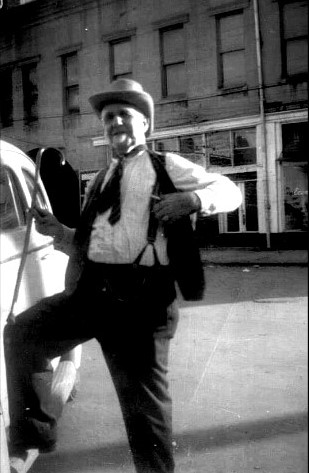 “Uncle Dave Macon:
Elements of Success and Legacy” (Michael
D. Doubler, 2019; 35 minutes) Already
a seasoned 50-year-old entertainer when the Grand Ole Opry
launched in 1925, Uncle Dave Macon was a star of the show’s first
decades. On air and traveling across the south, Macon regaled
audiences with banjo tricks, songs, and jokes he’d polished in
younger years. Doubler’s talk touches on various aspects of
Macon’s persona and career: quirks of his outgoing personality,
difficulties of balancing his family farm with a musical career,
characteristic attire and sense of humor, mixture of the risqué
and the religious in his performances, and struggles with mental
illness and alcoholism. A great-grandson of Macon, Doubler has
drawn on family anecdotes and photos to author the showman’s first
cradle-to-grave biography, Dixie Dewdrop: The Uncle Dave Macon
Story.
“Uncle Dave Macon:
Elements of Success and Legacy” (Michael
D. Doubler, 2019; 35 minutes) Already
a seasoned 50-year-old entertainer when the Grand Ole Opry
launched in 1925, Uncle Dave Macon was a star of the show’s first
decades. On air and traveling across the south, Macon regaled
audiences with banjo tricks, songs, and jokes he’d polished in
younger years. Doubler’s talk touches on various aspects of
Macon’s persona and career: quirks of his outgoing personality,
difficulties of balancing his family farm with a musical career,
characteristic attire and sense of humor, mixture of the risqué
and the religious in his performances, and struggles with mental
illness and alcoholism. A great-grandson of Macon, Doubler has
drawn on family anecdotes and photos to author the showman’s first
cradle-to-grave biography, Dixie Dewdrop: The Uncle Dave Macon
Story.
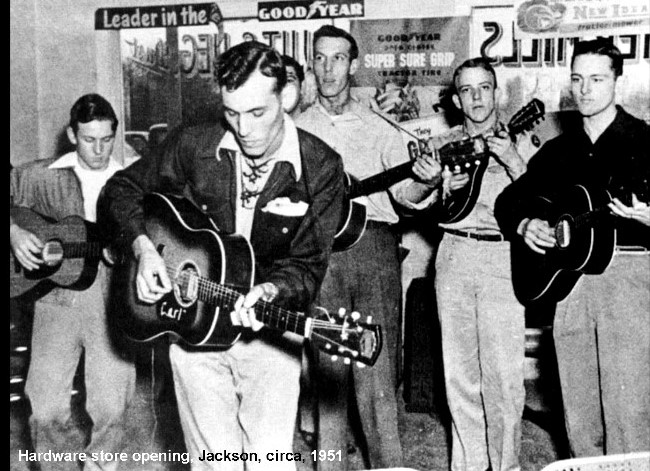 “Carl Perkins: Just a
Picker” (Shawn Pitts, 2019; 25 minutes) Pitts’ previous work on McNairy County musical
history has documented both the “Latta Ford jam” in Selmer--a
weekly musical event between WWII and 1960—and home recordings
made by Stanton Littlejohn during the same period. Oral history
research on both topics generated extensive documentation of the
area’s musicians, leading to the discovery that rock ‘n’ roll
pioneer Carl Perkins was one of them, and that Littlejohn made the
first known recordings of Perkins’ music. Recollections of Latta
veterans and the records themselves attest that Perkins was a
talented country player, but also not a figure who one might
expect to launch rockabilly’s fusion of Anglo- and
African-American musical ideas. Though there are evidences of
black and white interactions in the area’s musical life, it would
be later in Perkins' career that the black influences foregrounded
in his playing would be celebrated. Pitts contributed notes to
Bear Family’s recent CD, Discovering Carl Perkins: Eastview ,
Tennessee, 1952-53.
“Carl Perkins: Just a
Picker” (Shawn Pitts, 2019; 25 minutes) Pitts’ previous work on McNairy County musical
history has documented both the “Latta Ford jam” in Selmer--a
weekly musical event between WWII and 1960—and home recordings
made by Stanton Littlejohn during the same period. Oral history
research on both topics generated extensive documentation of the
area’s musicians, leading to the discovery that rock ‘n’ roll
pioneer Carl Perkins was one of them, and that Littlejohn made the
first known recordings of Perkins’ music. Recollections of Latta
veterans and the records themselves attest that Perkins was a
talented country player, but also not a figure who one might
expect to launch rockabilly’s fusion of Anglo- and
African-American musical ideas. Though there are evidences of
black and white interactions in the area’s musical life, it would
be later in Perkins' career that the black influences foregrounded
in his playing would be celebrated. Pitts contributed notes to
Bear Family’s recent CD, Discovering Carl Perkins: Eastview ,
Tennessee, 1952-53.
 “Handmade:
White Oak Basketry in Cannon County, Tennessee”
(Evan Hatch and Jacob Smithson, 2011; 34 minutes). This
documentary video was produced as a component of an exhibit at
the Arts Center of Cannon County about the area’s basketry
tradition, which is among America’s most significant local folk
craft legacies. Topics covered include history of the tradition
and some of its masters, harvesting and processing of white oak
materials, techniques and aesthetics of the craft, outstanding
baskets from the ACCC collection, and a white oak co-op project
making materials available to surviving makers. The Society also
published extensive documentation of Cannon County basketry in
the 2010 and 2012 volumes of the Tennessee Folklore Society
Bulletin.
“Handmade:
White Oak Basketry in Cannon County, Tennessee”
(Evan Hatch and Jacob Smithson, 2011; 34 minutes). This
documentary video was produced as a component of an exhibit at
the Arts Center of Cannon County about the area’s basketry
tradition, which is among America’s most significant local folk
craft legacies. Topics covered include history of the tradition
and some of its masters, harvesting and processing of white oak
materials, techniques and aesthetics of the craft, outstanding
baskets from the ACCC collection, and a white oak co-op project
making materials available to surviving makers. The Society also
published extensive documentation of Cannon County basketry in
the 2010 and 2012 volumes of the Tennessee Folklore Society
Bulletin. “Vernacular Design
Methods of Tennessee Delta Quilts” (Teri
Klassen, 2015; 30 minutes). Klassen discusses improvisation among
quilters of both African and Scotch Irish descent in the
Brownsville area, historically an intersection of plantation and
yeoman-sharecropper cultures. Working with 32 consultants, she
documented local quilt history and surviving quilts, from fancy
“bedspread” quilts of the wealthy to those made for use in
households of more modest means. Improvisation is especially
evident in these quilts made for use, which often incorporated
traditional design formulas such as the African-American “variable
shell.” Klassen is the author of Tennessee Delta Quiltmaking.
“Vernacular Design
Methods of Tennessee Delta Quilts” (Teri
Klassen, 2015; 30 minutes). Klassen discusses improvisation among
quilters of both African and Scotch Irish descent in the
Brownsville area, historically an intersection of plantation and
yeoman-sharecropper cultures. Working with 32 consultants, she
documented local quilt history and surviving quilts, from fancy
“bedspread” quilts of the wealthy to those made for use in
households of more modest means. Improvisation is especially
evident in these quilts made for use, which often incorporated
traditional design formulas such as the African-American “variable
shell.” Klassen is the author of Tennessee Delta Quiltmaking.
 “
“ “Some Real American
Music: the Gribble, Lusk, and York Black String Band of
Warren County” (Linda Henry, 2018; 21
minutes). Gribble, Lusk, and York
comprised an exemplary African-American string band near
McMinnville that was recorded by Library of Congress fieldworkers
in the 1940s. Henry’s work with descendants of these musicians
adds to their documentation. Murphy Gribble, John Lusk, and Albert
York were grandsons of a slave fiddler, Jefferson Lusk, who was
sent to New Orleans in the 1840s to learn the instrument. They
were active as a group for some 30 years into the 1950s, playing
for community dances and on McMinnville streetcorners, and their
repertory included both tunes familiar to white audiences and
others from Jeff Lusk’s music. For additional information and
field recordings of the group, visit Henry’s website gribbleluskandyork.org
.
“Some Real American
Music: the Gribble, Lusk, and York Black String Band of
Warren County” (Linda Henry, 2018; 21
minutes). Gribble, Lusk, and York
comprised an exemplary African-American string band near
McMinnville that was recorded by Library of Congress fieldworkers
in the 1940s. Henry’s work with descendants of these musicians
adds to their documentation. Murphy Gribble, John Lusk, and Albert
York were grandsons of a slave fiddler, Jefferson Lusk, who was
sent to New Orleans in the 1840s to learn the instrument. They
were active as a group for some 30 years into the 1950s, playing
for community dances and on McMinnville streetcorners, and their
repertory included both tunes familiar to white audiences and
others from Jeff Lusk’s music. For additional information and
field recordings of the group, visit Henry’s website gribbleluskandyork.org
.  “Uncle Dave Macon:
Elements of Success and Legacy” (Michael
D. Doubler, 2019; 35 minutes) Already
a seasoned 50-year-old entertainer when the Grand Ole Opry
launched in 1925, Uncle Dave Macon was a star of the show’s first
decades. On air and traveling across the south, Macon regaled
audiences with banjo tricks, songs, and jokes he’d polished in
younger years. Doubler’s talk touches on various aspects of
Macon’s persona and career: quirks of his outgoing personality,
difficulties of balancing his family farm with a musical career,
characteristic attire and sense of humor, mixture of the risqué
and the religious in his performances, and struggles with mental
illness and alcoholism. A great-grandson of Macon, Doubler has
drawn on family anecdotes and photos to author the showman’s first
cradle-to-grave biography, Dixie Dewdrop: The Uncle Dave Macon
Story.
“Uncle Dave Macon:
Elements of Success and Legacy” (Michael
D. Doubler, 2019; 35 minutes) Already
a seasoned 50-year-old entertainer when the Grand Ole Opry
launched in 1925, Uncle Dave Macon was a star of the show’s first
decades. On air and traveling across the south, Macon regaled
audiences with banjo tricks, songs, and jokes he’d polished in
younger years. Doubler’s talk touches on various aspects of
Macon’s persona and career: quirks of his outgoing personality,
difficulties of balancing his family farm with a musical career,
characteristic attire and sense of humor, mixture of the risqué
and the religious in his performances, and struggles with mental
illness and alcoholism. A great-grandson of Macon, Doubler has
drawn on family anecdotes and photos to author the showman’s first
cradle-to-grave biography, Dixie Dewdrop: The Uncle Dave Macon
Story.  “Carl Perkins: Just a
Picker” (Shawn Pitts, 2019; 25 minutes) Pitts’ previous work on McNairy County musical
history has documented both the “Latta Ford jam” in Selmer--a
weekly musical event between WWII and 1960—and home recordings
made by Stanton Littlejohn during the same period. Oral history
research on both topics generated extensive documentation of the
area’s musicians, leading to the discovery that rock ‘n’ roll
pioneer Carl Perkins was one of them, and that Littlejohn made the
first known recordings of Perkins’ music. Recollections of Latta
veterans and the records themselves attest that Perkins was a
talented country player, but also not a figure who one might
expect to launch rockabilly’s fusion of Anglo- and
African-American musical ideas. Though there are evidences of
black and white interactions in the area’s musical life, it would
be later in Perkins' career that the black influences foregrounded
in his playing would be celebrated. Pitts contributed notes to
Bear Family’s recent CD, Discovering Carl Perkins: Eastview ,
Tennessee, 1952-53.
“Carl Perkins: Just a
Picker” (Shawn Pitts, 2019; 25 minutes) Pitts’ previous work on McNairy County musical
history has documented both the “Latta Ford jam” in Selmer--a
weekly musical event between WWII and 1960—and home recordings
made by Stanton Littlejohn during the same period. Oral history
research on both topics generated extensive documentation of the
area’s musicians, leading to the discovery that rock ‘n’ roll
pioneer Carl Perkins was one of them, and that Littlejohn made the
first known recordings of Perkins’ music. Recollections of Latta
veterans and the records themselves attest that Perkins was a
talented country player, but also not a figure who one might
expect to launch rockabilly’s fusion of Anglo- and
African-American musical ideas. Though there are evidences of
black and white interactions in the area’s musical life, it would
be later in Perkins' career that the black influences foregrounded
in his playing would be celebrated. Pitts contributed notes to
Bear Family’s recent CD, Discovering Carl Perkins: Eastview ,
Tennessee, 1952-53.